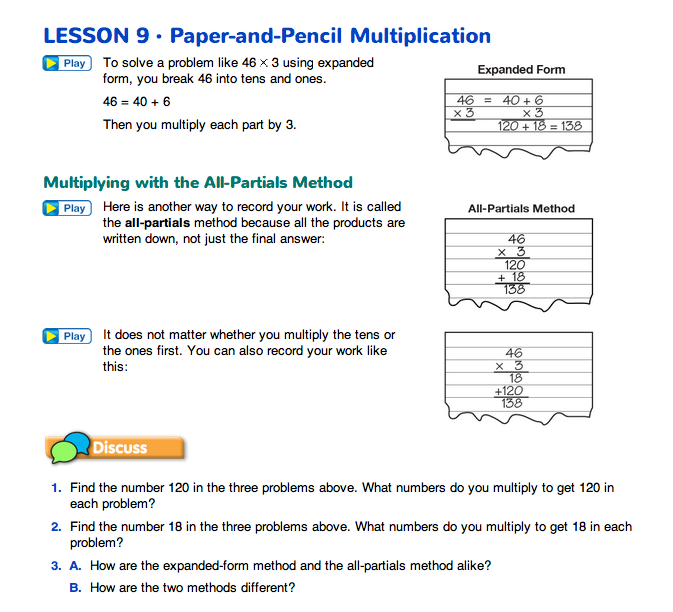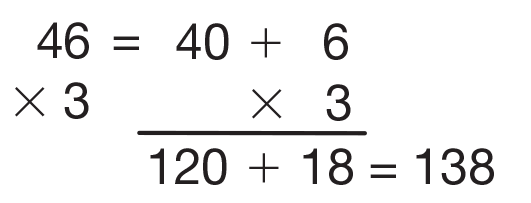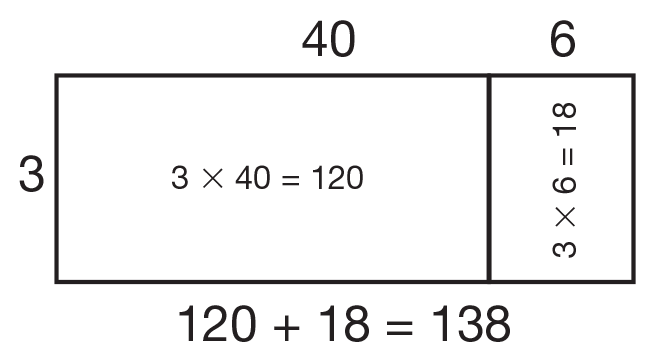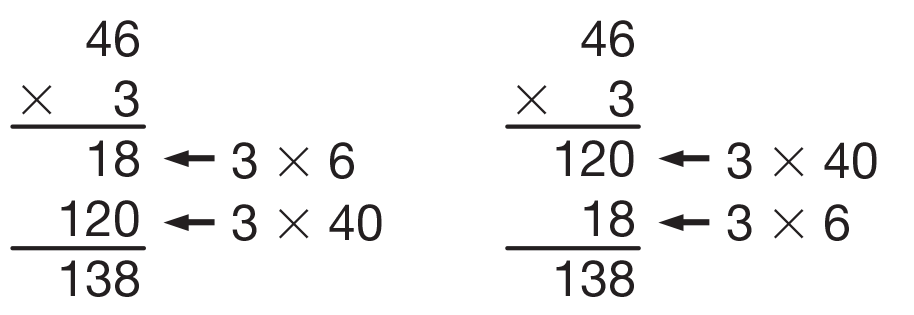Paper-and-Pencil Multiplication
Est. Class Sessions: 2–3Developing the Lesson
Part 1. The All-Partials Method
Review multiplication using expanded form and rectangles from Lesson 8. Ask students to work in pairs to solve 46 × 3. Ask them to choose one student to use expanded form and the other to use rectangles. They can use the examples on chart paper from Lesson 8 or Nila's and Sara's methods in the Discuss section of the Student Guide for Lesson 8. Ask one pair to display their solutions for the class. See Figures 1 and 2.
Ask:
Ask students to study the examples on the first Paper-and-Pencil Multiplication page in the Student Guide. The first shows 46 × 3 using expanded form and the next two examples show
46 × 3 using the all-partials method. Ask students to discuss Questions 1–3 in pairs before discussing them with the class.
In the all-partials method, students write down all of the products and then add. Ask students to look at the problem
46 × 3 as it is solved in the Student Guide and to explain the meaning of each of the numbers in the solution. Write a multiplication expression beside the numbers as in Figure 3 to show how the partial products are computed. Note that it does not matter which order the products are recorded.
Ask:
Ask students to try this strategy to solve 83 × 6. Ask a student to record the solution on chart paper. Title the strategy “all-partials.” Display this chart with the other strategies discussed in Lesson 8.
Ask:
To probe students' understanding of the all-partials method, ask:
When you feel students are ready, ask them to solve the problems in Questions 4–7. They can compare their answers with a partner and discuss any discrepancies.
















